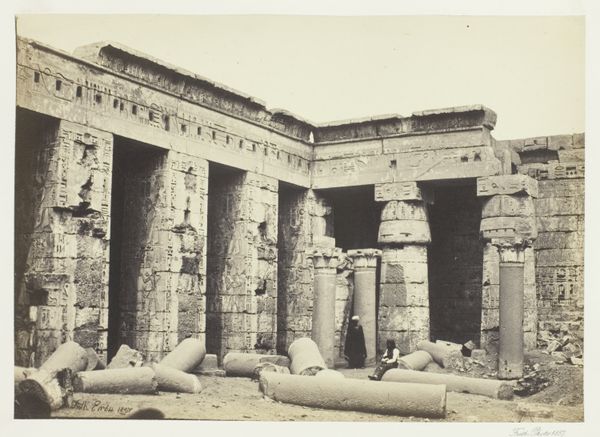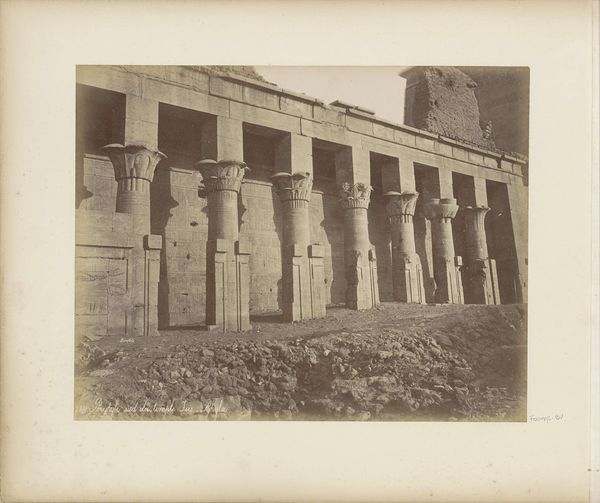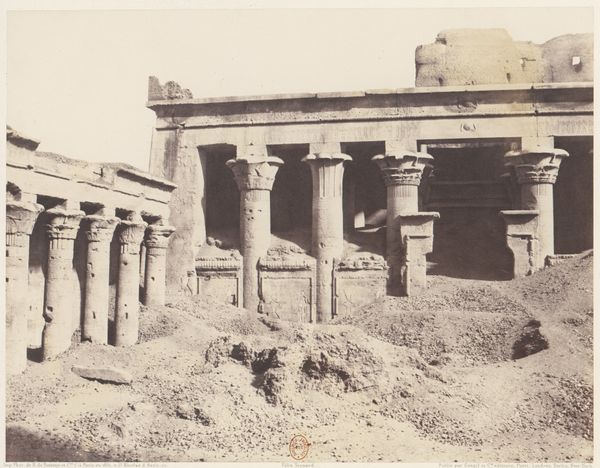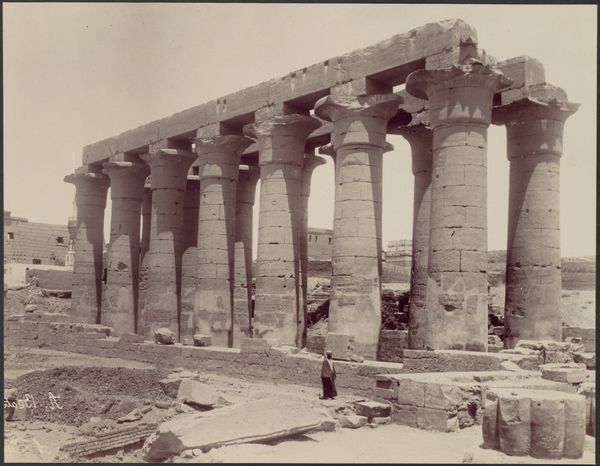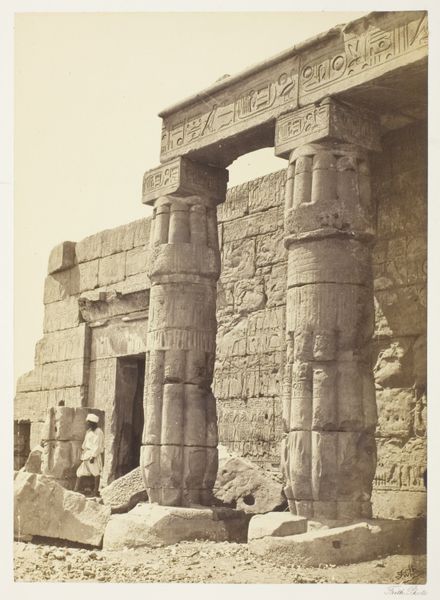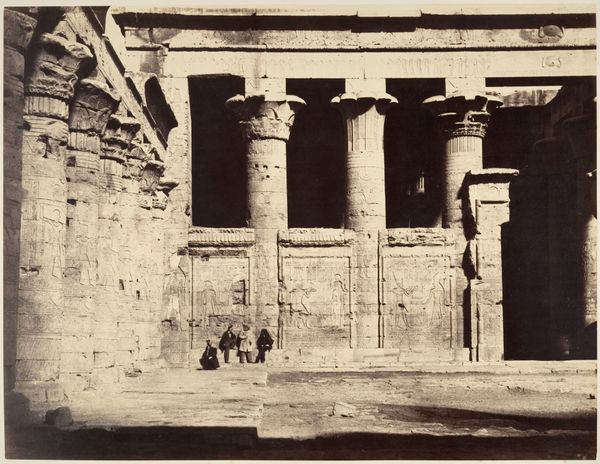
Grand Temple d'Isis à Philoe, Galerie Orientale; Nubie Possibly 1849 - 1852
0:00
0:00
print, paper, photography, gelatin-silver-print, architecture
#
print photography
#
16_19th-century
# print
#
landscape
#
ancient-egyptian-art
#
paper
#
photography
#
egypt
#
ancient-mediterranean
#
gelatin-silver-print
#
france
#
architecture
Dimensions: 16.7 × 22 cm (image/paper); 29.9 × 42.8 cm (album page)
Copyright: Public Domain
This photograph of the Grand Temple of Isis at Philae, Nubia, was made by Maxime Du Camp using the calotype process, an early photographic technique that used paper coated with silver iodide. The hazy, almost dreamlike quality of the print results from the paper negative used to produce it. Unlike later photographic methods that used glass plates, the paper created a slightly diffused image. This was then contact-printed onto another sheet of paper to create the final positive image that you see here. Du Camp’s choice of process speaks to the exploratory spirit of early photography. The calotype allowed for a relatively quick and reproducible image, which was crucial for documenting archaeological sites like this one. Think of it: photography freed artists from the task of painstaking reproduction. This image exists at the intersection of art, science, and colonialism, as Du Camp was commissioned to document Egypt and the Near East. The photograph serves not only as a record but also as a statement about the photographer’s, and by extension, Europe’s, relationship to the ancient world. It’s a physical artifact of a moment of discovery, and also of cultural encounter.
Comments
No comments
Be the first to comment and join the conversation on the ultimate creative platform.
